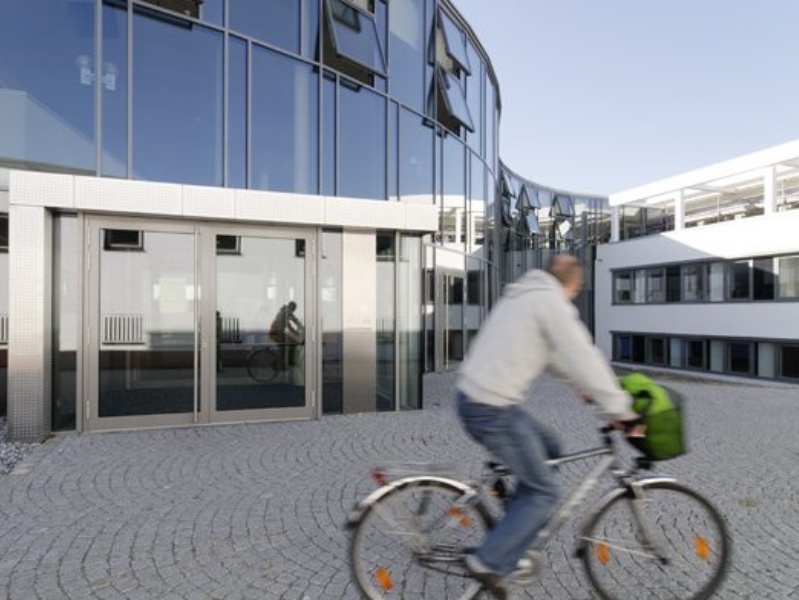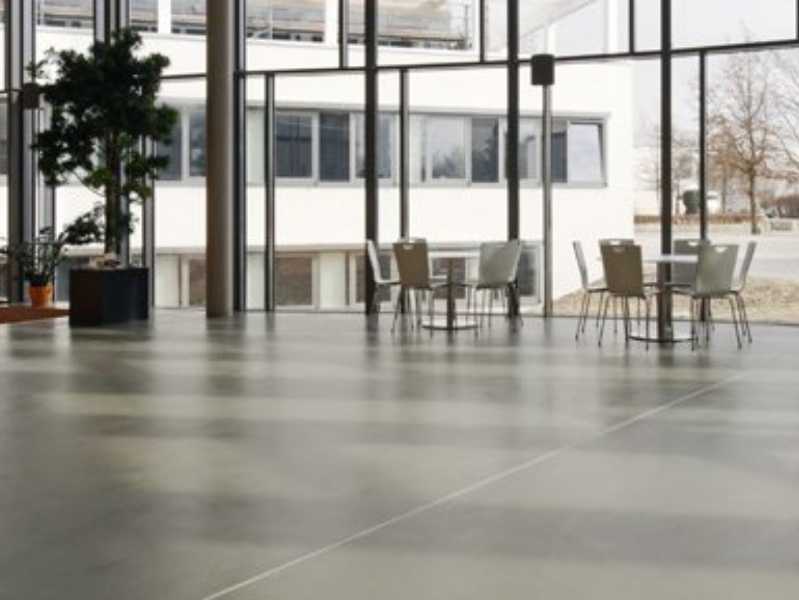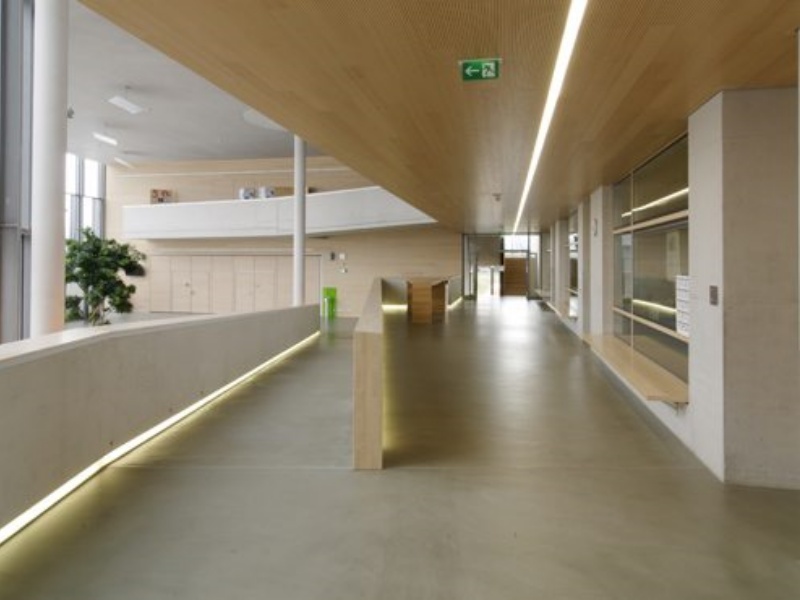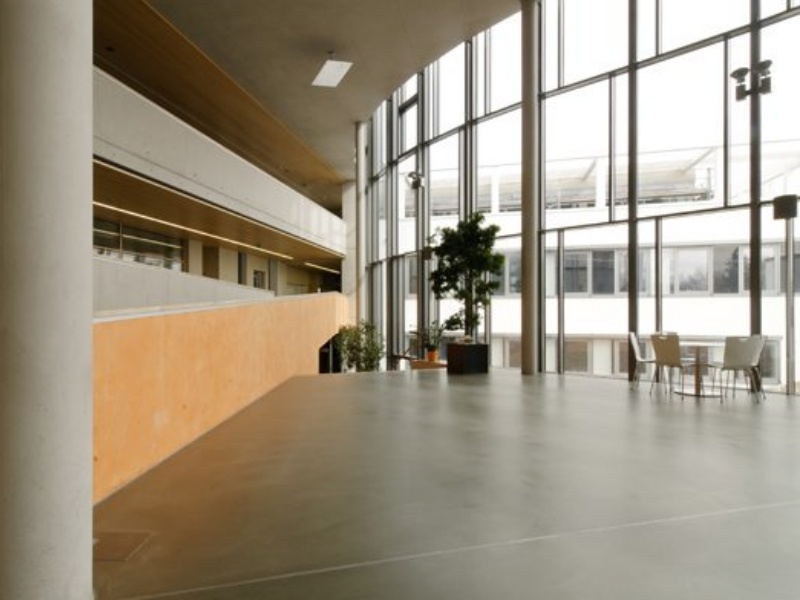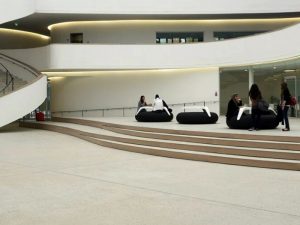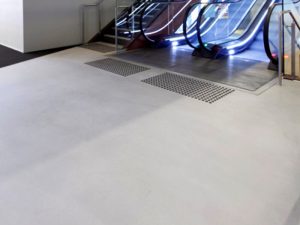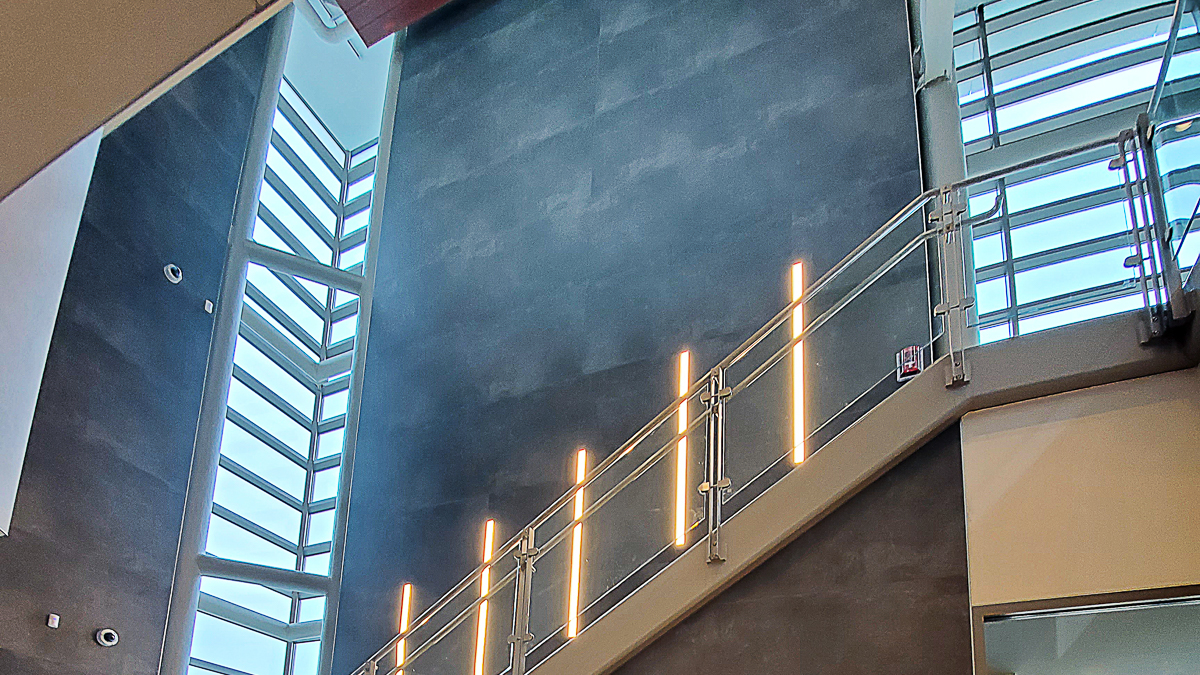SITUATION:
The Wirtschaftsschule Alpenland (WISS) college of commerce in Bad Aiblingen is a showpiece educational facility in the Bavarian district of Rosenheim. In the recently completed extension, the aim of the planners commissioned was to bond together the concepts of “commerce” and “learning” in their design; the skills acquired at the college ultimately lay the cornerstone for future career success. Correspondingly, modern working life was to be reflected in the transparency and flexibility of the architecture.
CHALLENGES:
In planning the interior of the new building featuring, among other amenities, six classrooms, a music room and a school hall, the architects attached special importance to high flexibility of use as well as to a sweeping sensation of openness, with bright, light-flooded rooms intended to radiate calm and clarity in the busy everyday life of the college. The architects’ vision is particularly prominent in the new students’ break area linking the original building and the new extension. A split-level design incorporating ramps to ensure unobstructed access for disabled persons and extending across two storeys, it creates an open, light-spangled transparency with its large 270 m2 glass façade. The planners achieved the characteristic expansive overall effect of the foyer by means of a monolithic floor installed with virtually no joints and boasting a luxurious surface appearance as well as a colour concept perfectly matching the specified spatial design. A particularly high-quality material concept was selected, meeting exceptionally well the client’s requirements with regard to elegance, good workability and cost-efficiency even under the exceptional burdens imposed by daily college loads: ARDEX PANDOMO FloorPlus.
SOLUTION:
This hard-wearing material was a compelling choice not only for reasons of its expansive visual effect resulting from its jointless installation, but also thanks to its multifaceted creative potential for unique individualisation via variegated colour nuances, shades, graining, techniques etc. In the college of commerce, the material was first individually tinted in a light grey hue and then, after adding a 6 to 10 mm deep layer of a special hard-grain sand to increase its pressure and scratch resistance, installed onto a calcium sulphate heating screed on three storeys, largely without joints, covering a total of 850 m2. The surfaces were then sanded and oiled twice. Application to the various ramps between the storeys presented a particular challenge to the craftsmen performing the work due to the consistency of the material. The result? Tranquil, expansive floors striking a pure note and shaping the room’s character with homogenous semi-gloss surfaces. Their unadorned elegance conjures a sense of space exquisite in its intensity.
